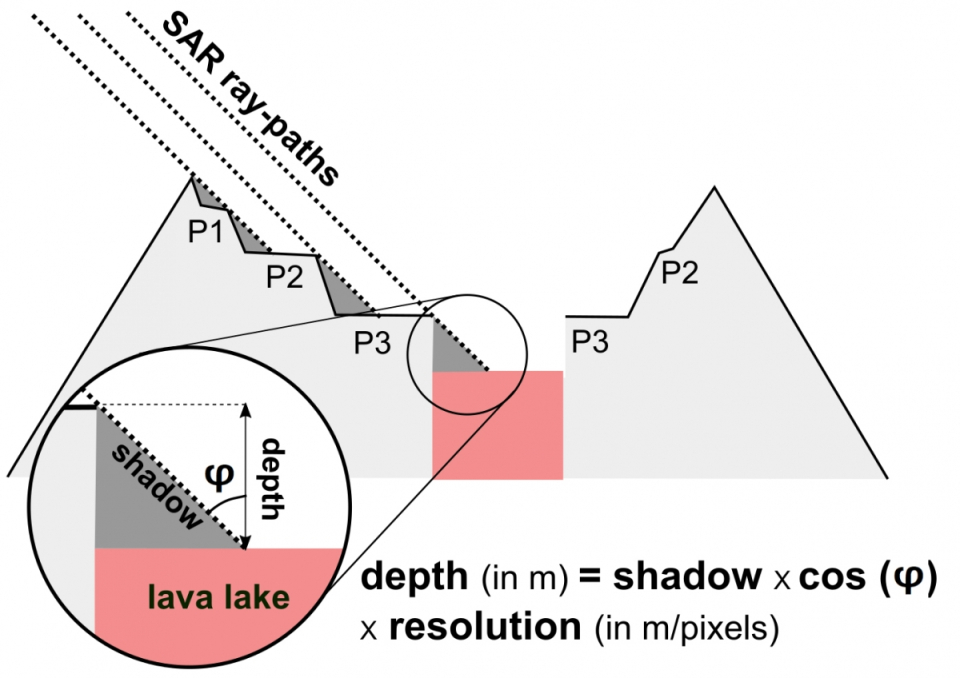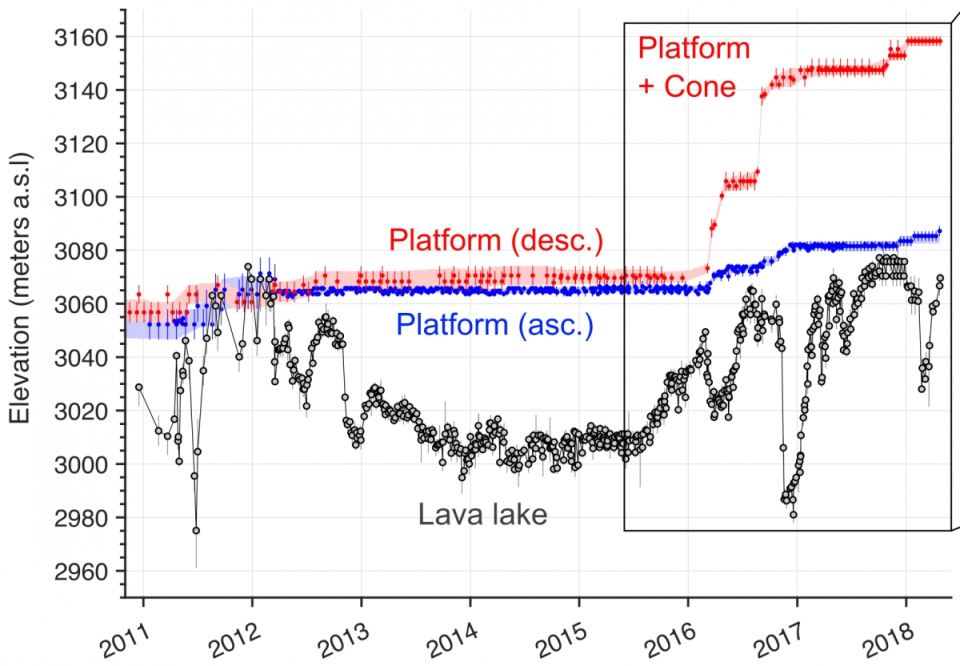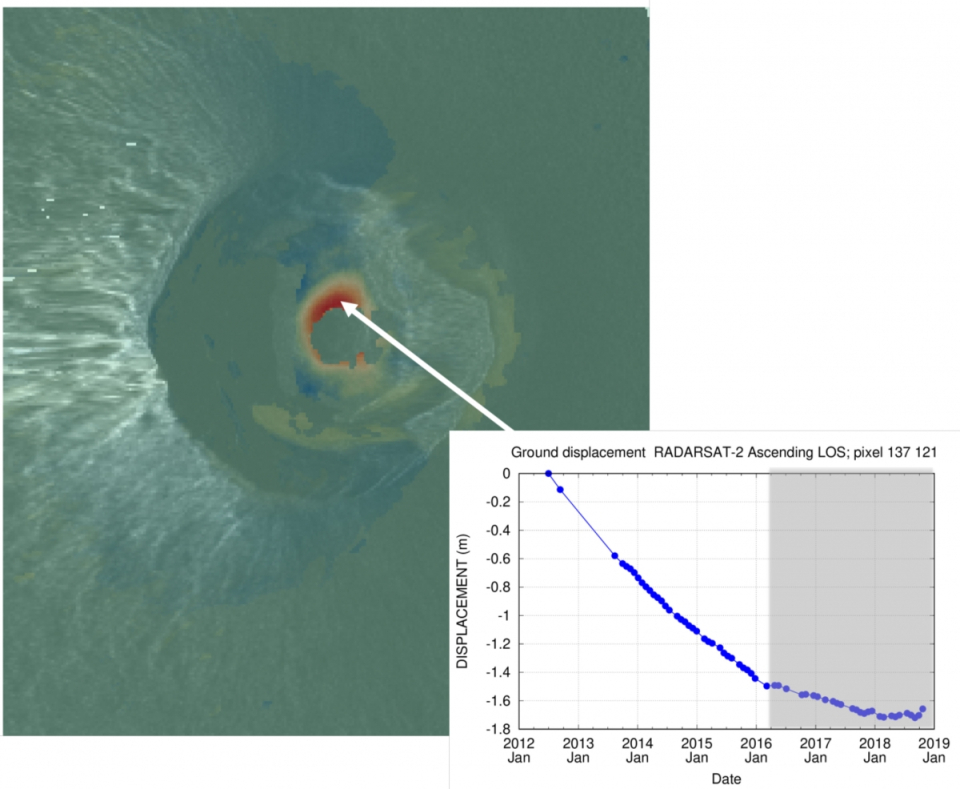Context and objectives
In SAR interferometry, phase unwrapping remains the bottleneck to get continuous phase measurements among separated coherent areas, which is required to compute the topographic or the relative displacement component. Classical interferometry often leads to unconnected patches, requiring ground truth for each patch to allow connecting them together and get continuous measurement across the scene. However, in general, these ground truth data are unavailable.
Most recent SAR sensors use wide band signals to achieve metric range resolution. One can also take advantage of wide band to split it into sub-bands and generate several lower-resolution images, centred on slightly different frequencies, from a single acquisition. This Split Band process, also named Multi Chromatic Analysis (MCA), corresponds to performing a spectral analysis of SAR images. Split-Band SAR interferometry (SBInSAR) is based on spectral analysis performed on each image of an InSAR pair, yielding a stack of sub-band interferograms. Scatterers keeping a spectrally coherent behaviour in each sub-band interferogram show a phase that varies linearly with the carrier frequency, the slope being proportional to the absolute optical path difference. This potentially solves the problems of phase unwrapping on a pixel-per-pixel basis, in areas where classical interferometry provides unconnected patches that must be unwrapped independently. It might allow connecting independent zones, estimating the absolute phase on most coherent pixels of each patch, provided that the acquired accuracy could be achieved.
The main objective of the MUZUBI project was to improve absolute phase unwrapping wherever possible by applying MCA on pursuit and spotlight TERRASAR-X data. The innovative method would be tested on two case studies in Argentina and Democratic Republic of Congo. The developments take advantages of the results obtained during the Vi-X project. Results would be compared with the results obtained in the frame of the project RESIST in order to assess and quantify the benefit of the proposed methodology.
Project outcome
Scientific Results
Development of an integrated absolute phase unwrapping processing, SBInSAR parameters optimization and validation of the method on different test sites. Detailed study of the limits of the method, including regarding the use of PSf, and comparison between different sensors (and hence bandwidths and modes).
Reference topography of the Nyiragongo lava lake, using a Remotely Piloted Aircraft System (RPAS) and a Structure-from-Motion Multi-View Stereo (SfM MVS) photogrammetry to create a 3D model of the Nyiragongo crater at a spatial resolution of ≤ 20 cm per pixel.
Societal (including environmental) relevance
Contribution to an improvement of the detectability of possible precursory signals and of the modelling of studied volcanoes. Anticipating potentially destructive events is important for the society as it allows taking preventive actions to protect populations.
Products and Services
- Easier and improved phase unwrapping process, extending the measurement area whatever the final use of the derived phase surface (topographical measurements or displacement monitoring).
- Derived products: lava lake levelling of the Nyiaragongo volcano to improve its monitoring. Since lava lake levelling requires a constant monitoring, the developed methodology may also be considered as a potential service.
Potential Users
- DR Congo: Goma Volcano Observatory (GVO): in charge of the monitoring of the Virunga active volcanoes.
- Argentina: Group de Estudio y Seguimiento de Volcanes Activos (GESVA) - Group of Study and Monitoring of Active Volcanoes.
- Chile: Oficina Nacional de Emergencia del Ministerio del Interior (ONEMI) – National Office of Emergencies of the Departement of the Interior, in charge of volcanic or seismic monitoring.
Outreach
MUZUBI: using interferometry to evaluate volcanic risks
MUZUBI : l’interférométrie pour évaluer le risque volcanique
| Project leader(s): | CSL - Centre Spatial de Liège | |||||
| Belgian partner(s) |
|
|||||
| International partner(s) |
|
|||||
| Location: |
Country:
Region:
|
|||||
| Related presentations: | ||||||
| Website: | https://www.csl.uliege.be/cms/c_11752029/en/muzubi-web | |||||




